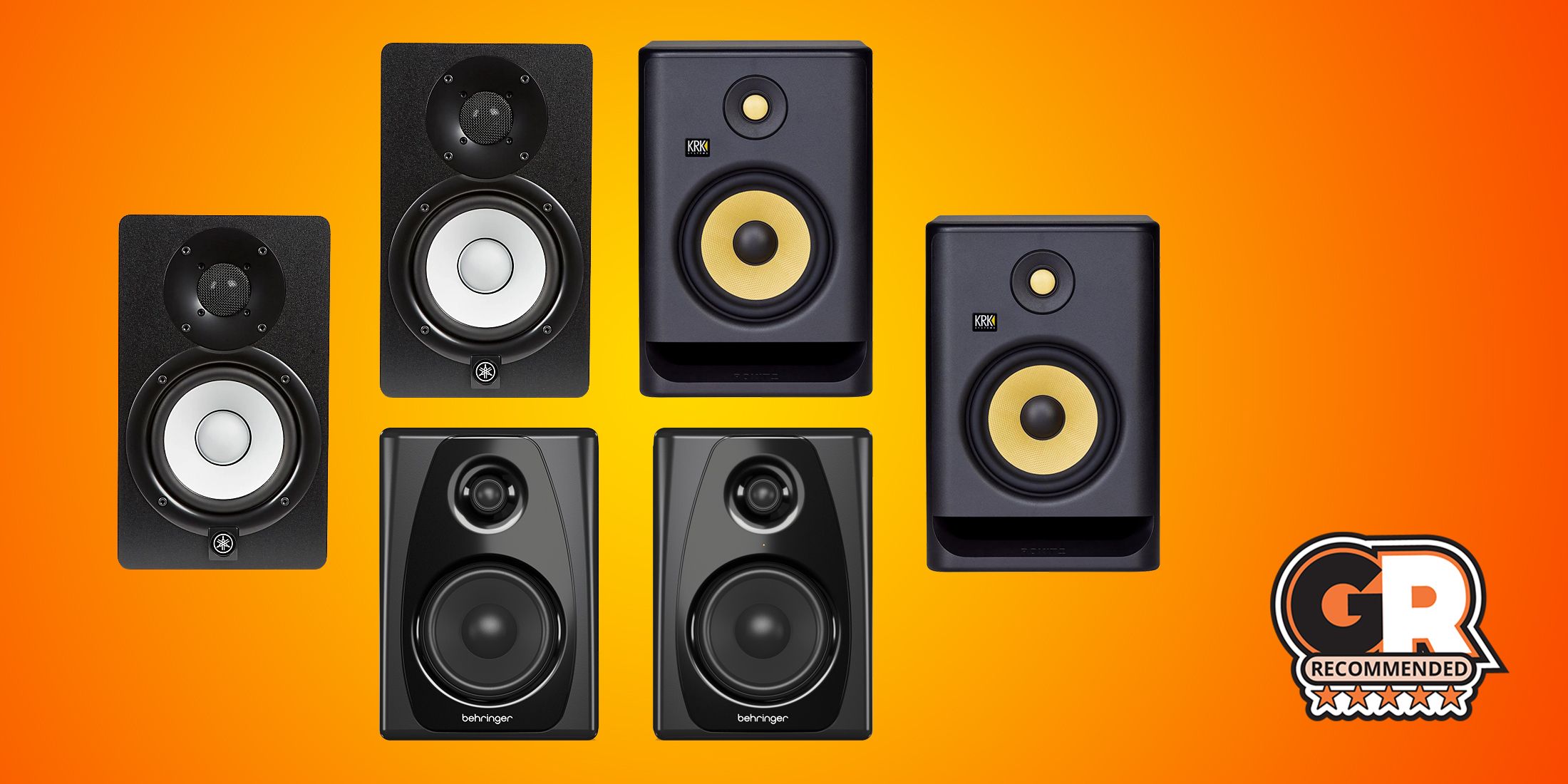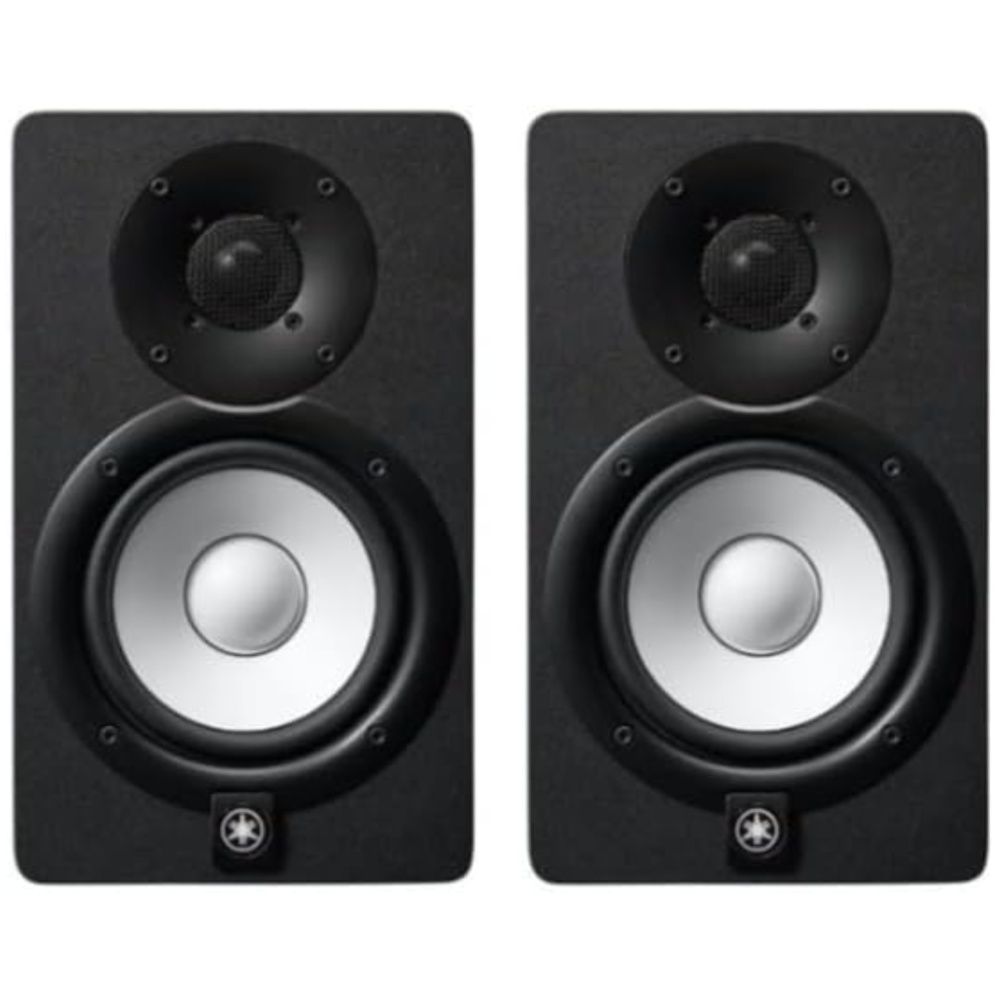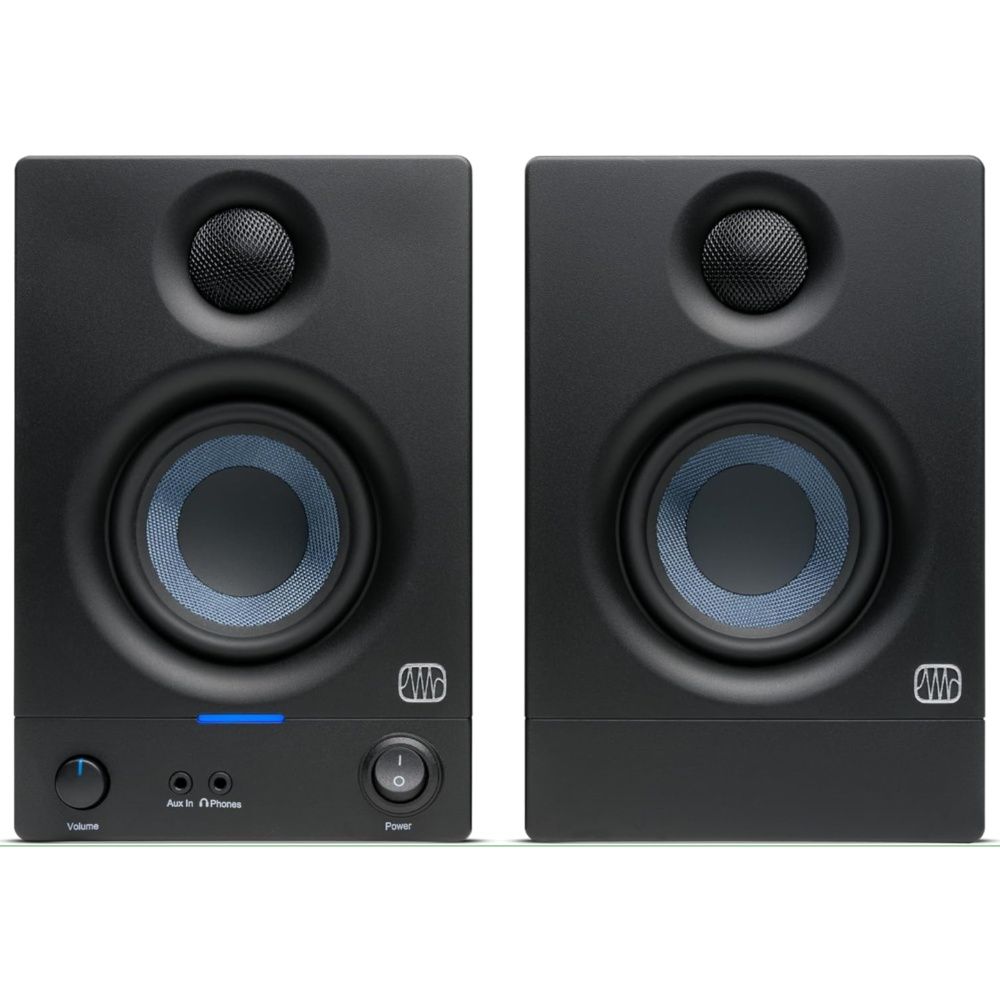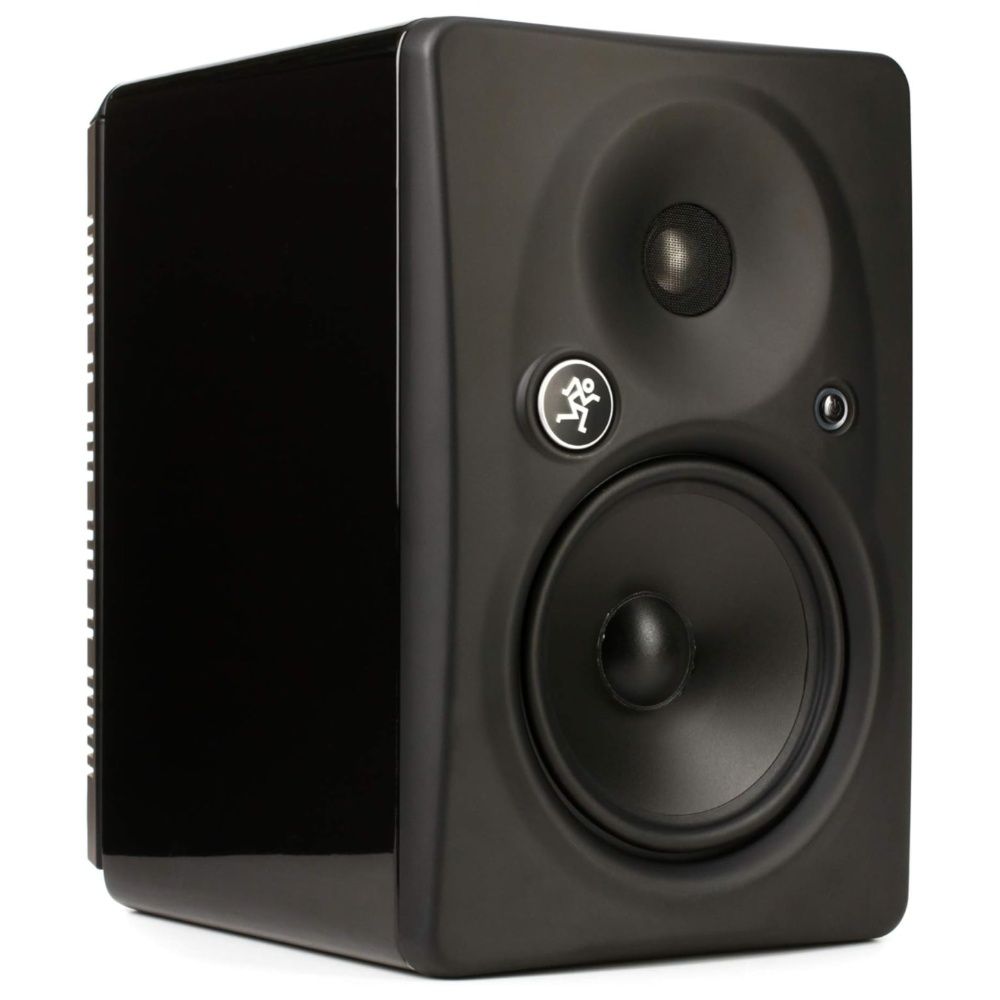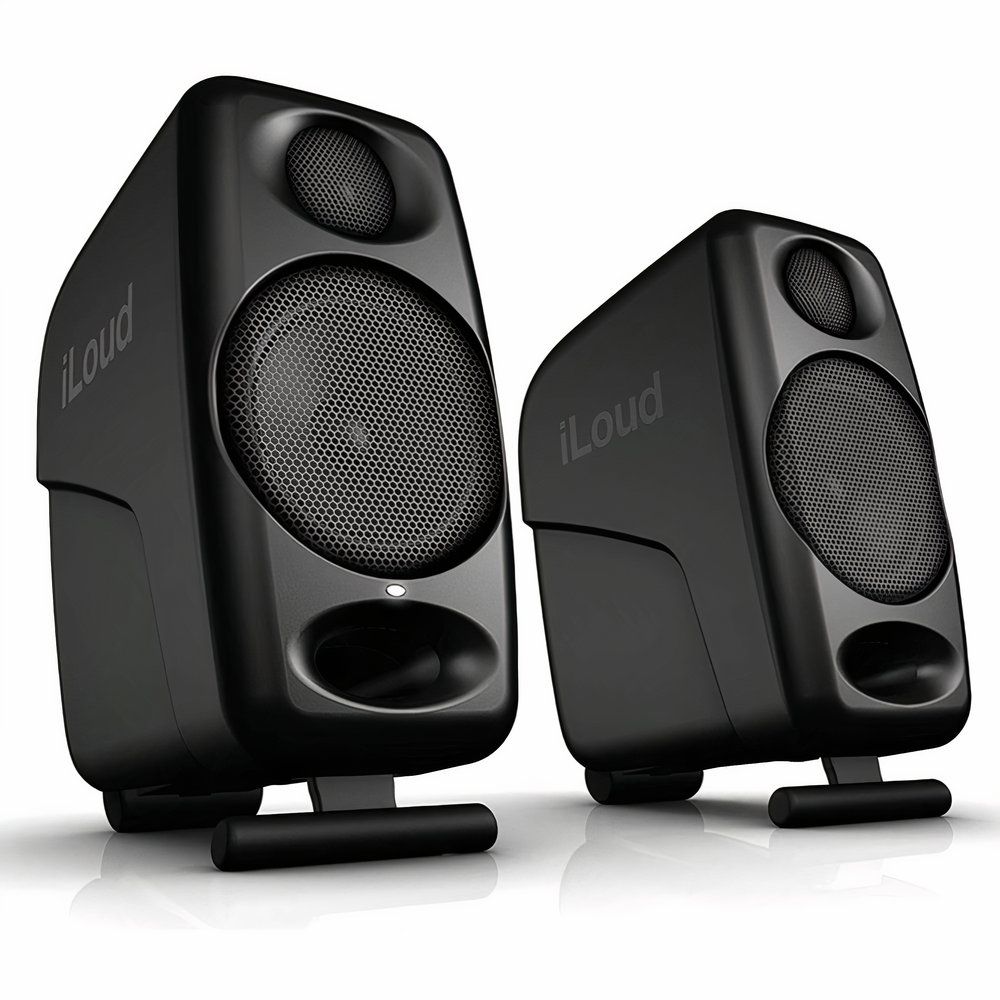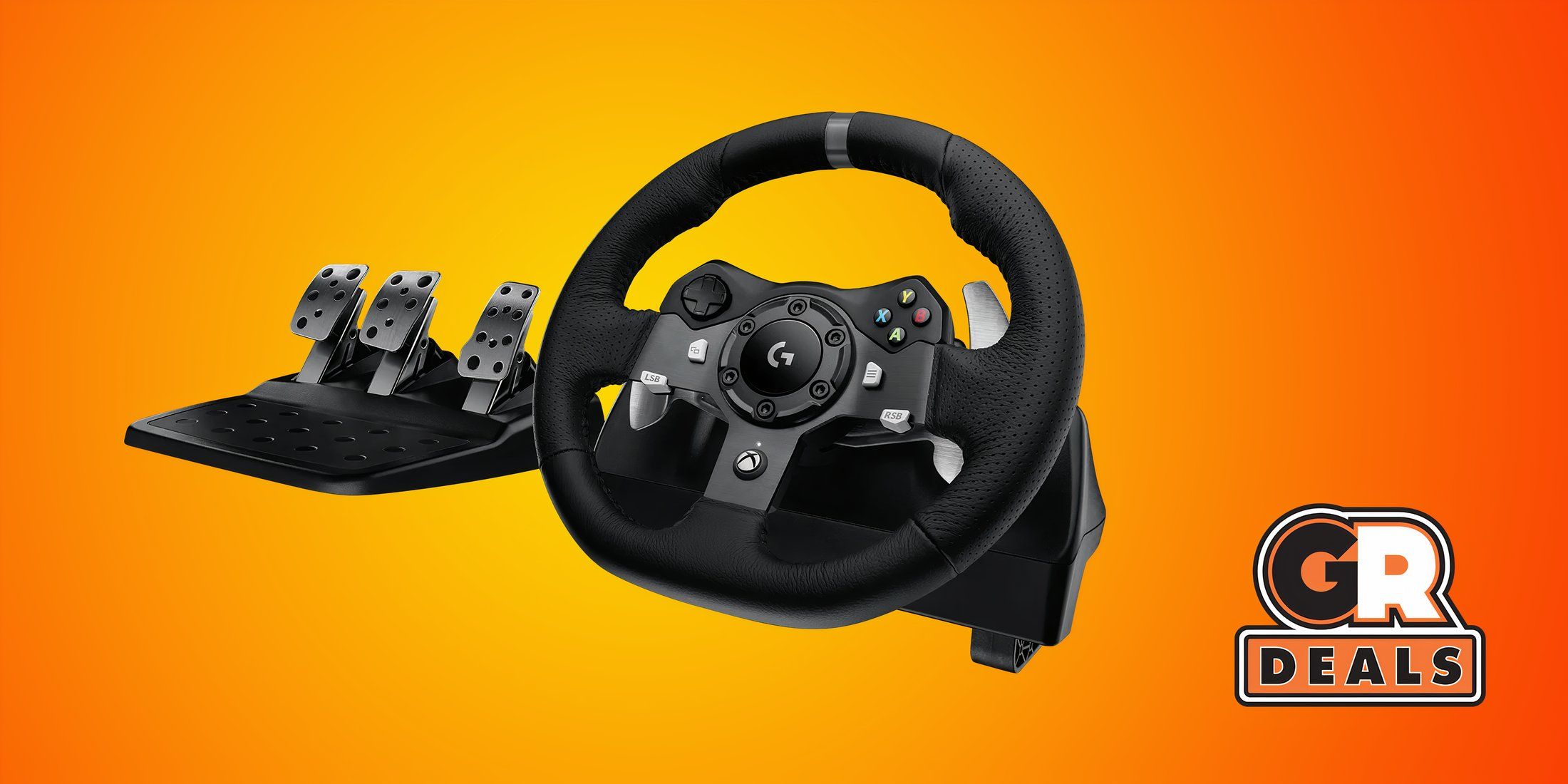Those interested in music production or users who just appreciate high-fidelity audio would be familiar with studio monitors and their advantages. Studio monitors are essentially speakers with cleaner and more natural sound output, without a heavy emphasis on any one frequency. This results in more accurate audio when listening to music or listening back to your own recorded tracks. Furthermore, studio monitors are designed to be used in close proximity, unlike speakers that fill whatever space you are in with music.
Because of how accurately studio monitors reproduce sound, they are an essential part of a music production setup. However, there are a few drawbacks as well, such as they work best in small studio environments and they do not have as many amplification options as the standard speakers or powered speakers. So, if your use case involves accurate reproduction of sound, studio monitors are the way to go, but, if you just want to enjoy loud music without being picky about how accurate it sounds, speakers will serve you better.
Related
Best Sound Card for PC Gaming in 2024
To maximize audio for gaming, the right sound card for PCs are a must have. These are the best ones available right now.
With that said, there are quite a few studio monitors on the market, and it can be hard to find the right one for your individual use case. Fortunately, Game Rant has put together a list of the best studio monitors in 2024.
Game Rant’s Best Studio Monitors for 2024
Yamaha’s HS series of studio monitors include multiple models based on the size of the woofer. The HS5 features a 5-inch cone woofer and a 1-inch dome tweeter and, on paper, you may think that’s too small for your space, but the larger the size of the woofer, the stricter you have to be about where you place the monitors. The Yamaha HS5 is a two-way bass-reflex bi-amplified near-field studio monitor that can be purchased individually or as a pair.
The studio monitor has 70W of power amplification and is a bi-amp system with 45W for low-frequency (LF) and 25W for high-frequency (HF). You get a frequency response range of 54Hz to 30,000Hz and the monitors deliver low distortion with a well-defined bottom end at any output level. The MDF cabinet creates a low resonance enclosure that not only negates unwanted resonance, but also increases the accuracy of sound reproduction.
For connectivity, the Yamaha HS5s come with both XLR and TRS phone jack inputs. It should be noted that these are ported studio monitors, so you will need to be cognizant of how far you place them from the wall. These can be mounted to your wall, ceiling, and baton brackets, but you will need to identify the ideal placement and orientation based on the size of your room.
If you are trying to get into music production or just want to experience studio monitors, the relatively higher price tags may intimidate you, but that’s where the PreSonus Eris 3.5 comes in. For about $100, these are a pair of studio monitors that will not only fit in any space, but also punch above their weight in terms of sound output. Those who do not want to invest a ton of money into sound monitors would very much appreciate what they get with the PreSonus Eris 3.5.
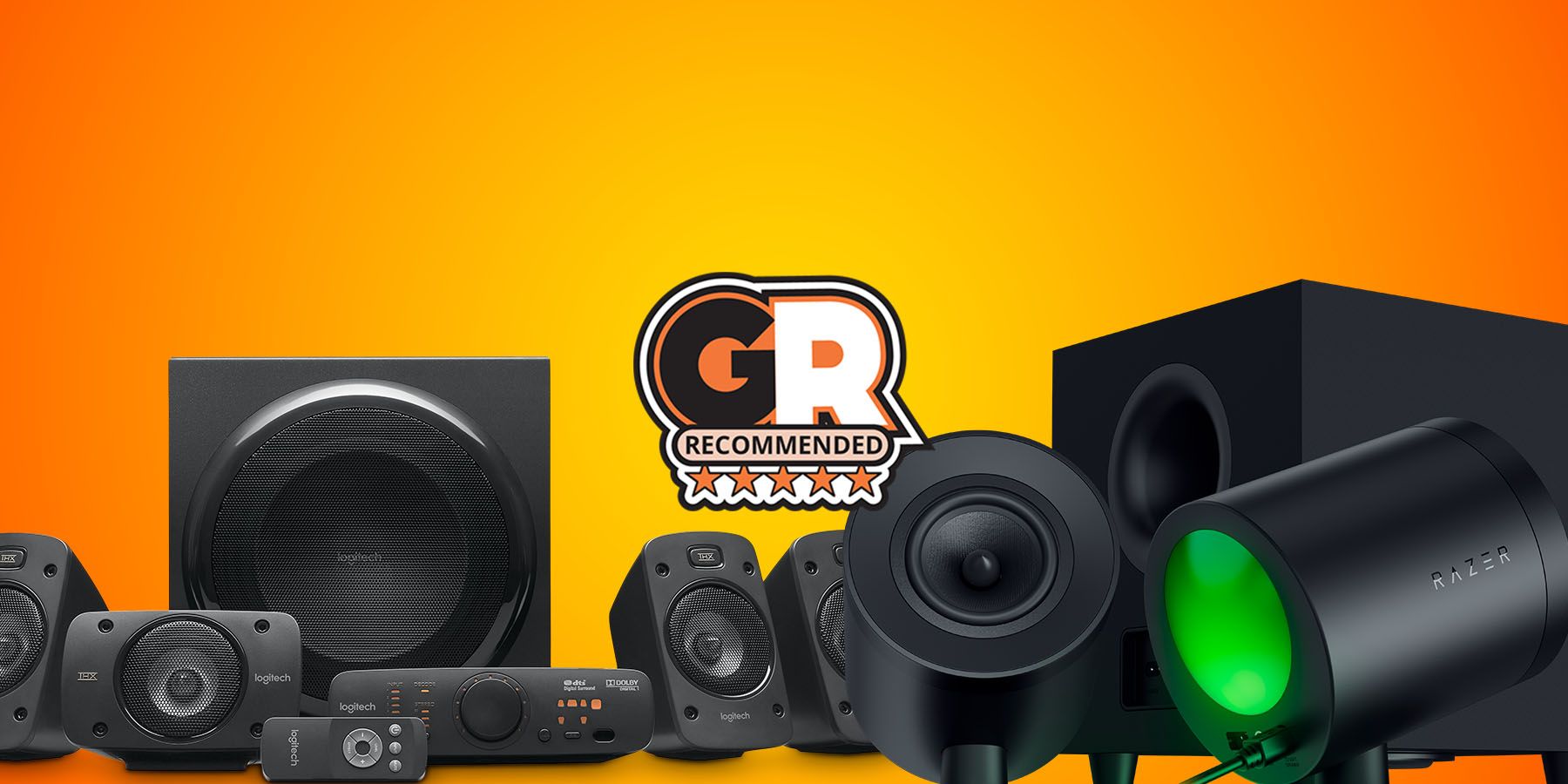
Related
Best Surround Sound Gaming Setups for 2024
Surround sound setups are an excellent way to upgrade the audio setup for any gamer to improve the immersion or give gamers a competitive edge.
For several years, the company was selling its 2017 model of the PreSonus Eris 3.5, but for 2024, they have been upgraded to a Gen 2 version with a few improvements. As the name suggests, these come with 3.5-inch woven-composite, low-frequency drivers and 1-inch silk-dome, high-frequency drivers that can generate a total of 50W of power (25W each). They have a frequency response range of 80Hz to 20,000Hz, which while not the widest, is good enough considering the entry-level price point.
You get acoustic tuning controls, as well as both balanced and unbalanced inputs in the form of 1/4-inch TRS inputs and 1/8-inch stereo and RCA inputs respectively. Another set of features that you would typically find on the more expensive options includes RF interference protection, over-temperature protection, a subsonic filter, output-current limiting, and a power saver mode that kicks in after 40 minutes.
The PreSonus Eris 3.5 Studio Monitors are perfect for experiencing high-fidelity audio without breaking the bank. However, those looking for larger monitors can check out the Eris 4.5BT, which comes with Bluetooth connectivity but at double the price.
If the quality of sound output takes precedence over budget for you, the Mackie HR624MK2 studio monitors are what you should consider. They are an expensive pair of monitors with a single monitor costing around $600, which means you will be spending well over $1000 for a pair. So, what do you get for that much money? You get a pair of 6.7-inch active studio monitors that have a 1-inch titanium dome ferro-fluid cooled tweeter with a power output of 140W from a single monitor.
These studio monitors are great for any room and perform impressively as home theater speakers or as part of a gaming system, thanks to their THX pm3 certification. You get XLR and TRS for balanced inputs as well as unbalanced RCA inputs. There are also low-frequency and high-frequency controls to dial in the sound to your liking. You also get internal dampening that helps get rid of any artifacts at different ranges.
The Mackie HR624MK2 are closed cabinet studio monitors, which means you get the most accurate sound reproduction. Along with all these features, the company has also added a rotatable logo which can be turned to align with the orientation of the monitors. The solid construction and incredible sound output are what make the Mackie HR624MK2 studio monitors the best high-end offering.
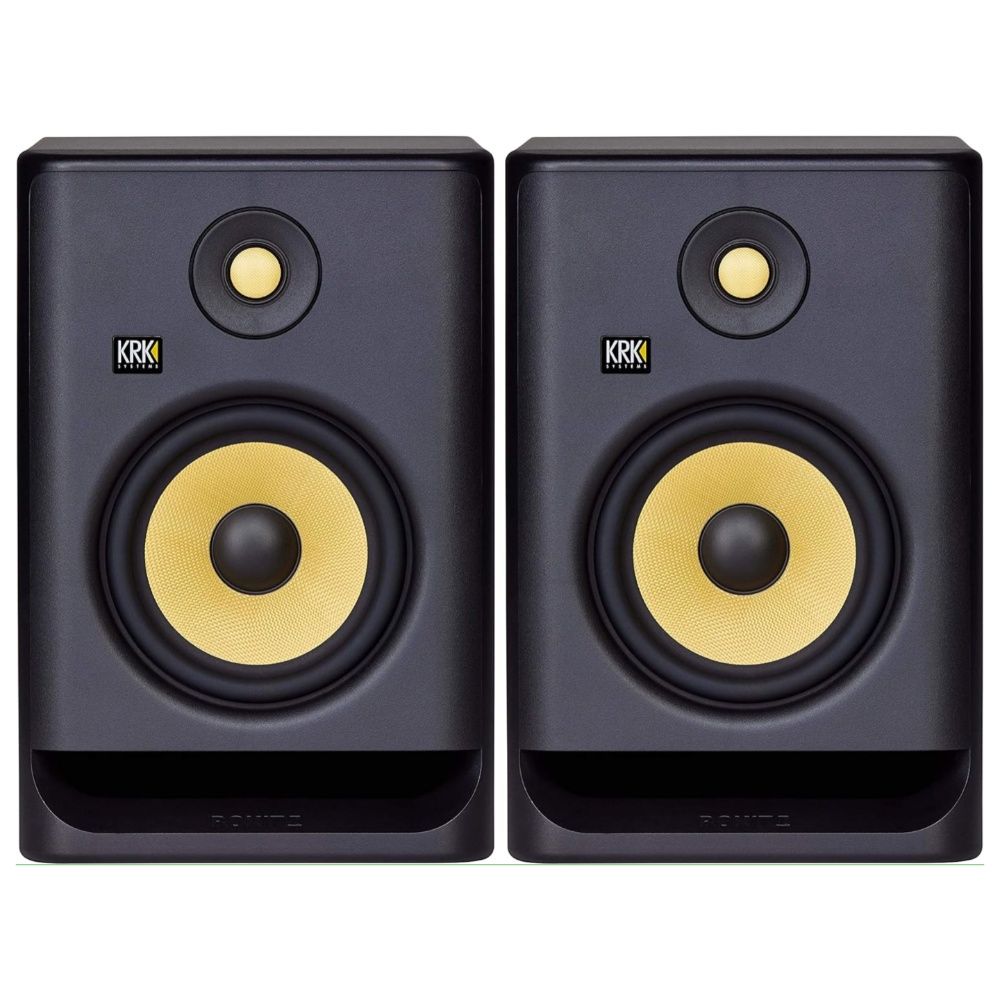
Best Mid-range Studio Monitors
KRK ROKIT 7 Gen 4
$430 $498 Save $68
The KRK ROKIT 7 Gen 4 are 7-inch powered near-field studio monitors that are capable of outputting up to 145W per monitor. They feature a DSP-driven graphic EQ with 25 settings to fine-tune the sound output. The monitors have a frequency response range of 42Hz to 40,000Hz. There is also an app that can be used for real-time monitoring.
- Input Type
- Balanced TRS/XLR Combo Jacks
- Brand
- KRK
- Power
- 145W per monitor
- Speaker configuration
- LF driver – 7-inch, HF driver – 1-inch
- Frequency response
- 42Hz – 40KHz
- Excellent sound output
- LCD display for monitoring
- Front firing port
- On the pricier side especially when not on sale
- Bluetooth connectivity missing
The ROKIT 7 G4 from KRK are the best-sounding and feature-rich studio monitors in the mid-range. Everyone in the world of music production is familiar with KRK, as the brand behind some of the most popular studio monitors and that holds true with the ROKIT 7 G4. The company is on the fourth generation of ROKIT studio monitors, and the 7-inch model delivers incredible sound.
Featuring Kevlar drivers and a complimentary enclosure design, the ROKIT 7 G4 studio monitors have a power output of 145W per speaker. There is a Brickwall limiter that kicks in when the amp reaches its maximum levels, which not only protects the hardware, but also leads to a more balanced sound and wider dynamics. There is also a foam pad integrated with the ROKIT 7 G4 that reduces vibration for an even more consistent sound.
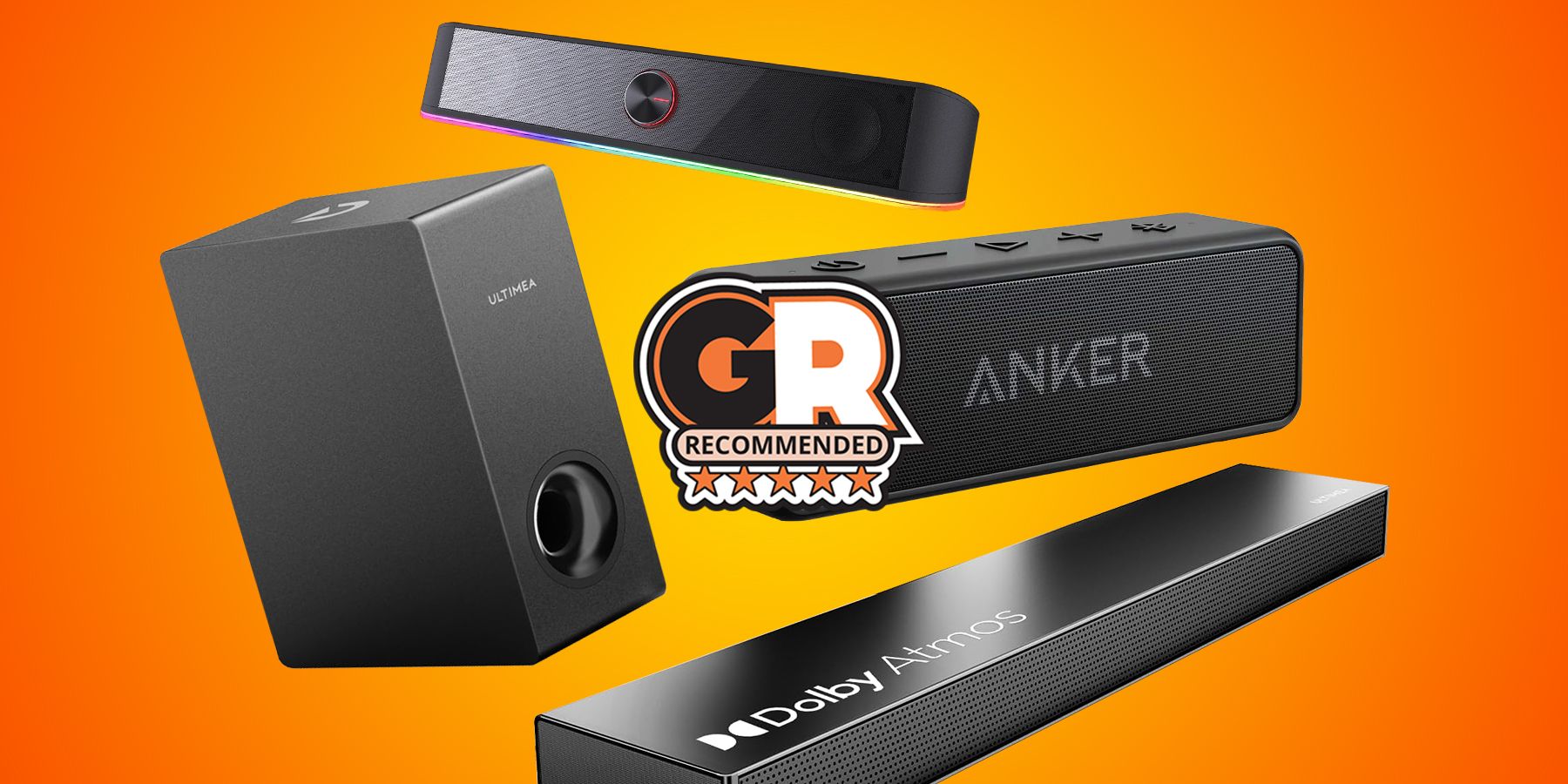
Related
The Best Soundbars Under $200
Soundbars are an easy way to enhance audio, but some are more affordable than others. Find out which soundbars under $200 are the best overall!
What sets it apart from the competition, besides the stylish black and yellow design, is the inclusion of an LCD screen that shows the DSP-driven onboard equalizer (EQ). The EQ comes with 25 settings to help you fine-tune the audio output according to your space.
In terms of specifications, the KRK ROKIT 7 G4 has a frequency response range of 42Hz to 40,000Hz, TRS/XLR combo jacks for balanced inputs, and there is also an app for real-time monitoring that is available on both Android and iOS. Lastly, these studio monitors are also available in white.
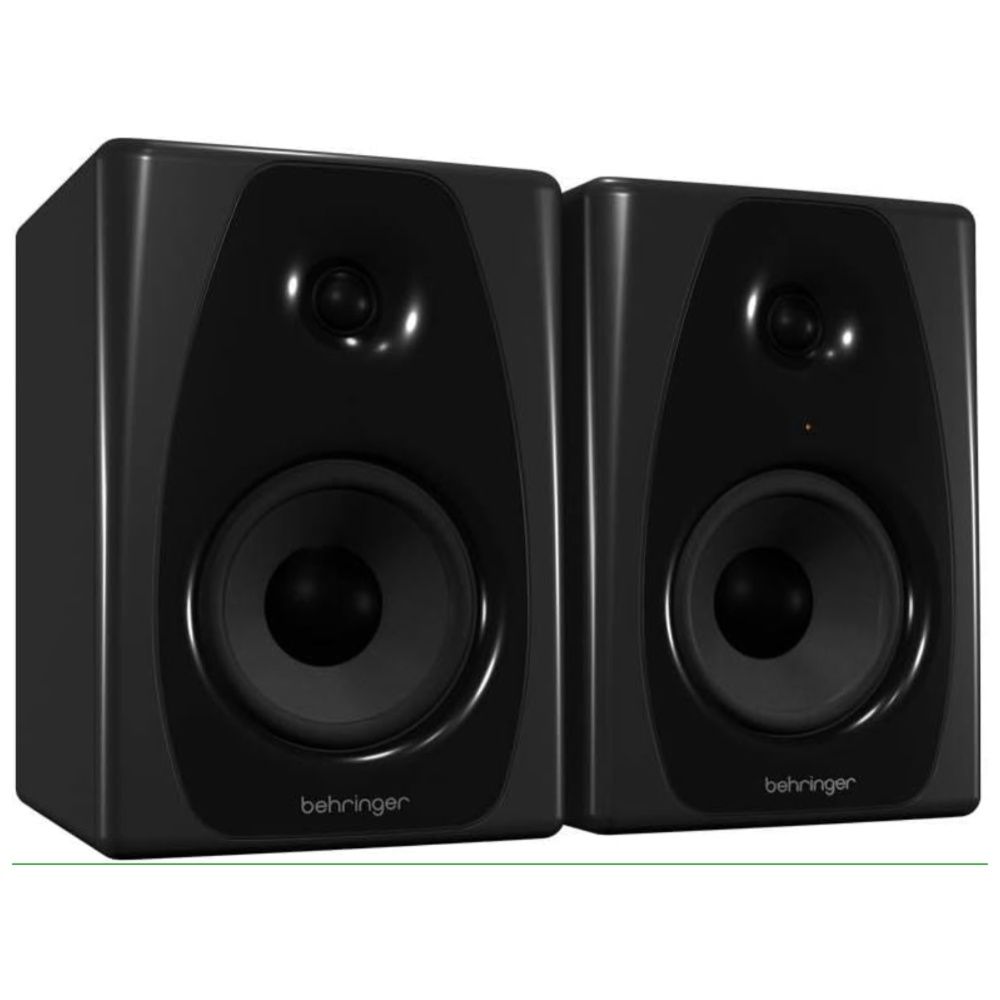
Best Budget Studio Monitors
Behringer Studio 50USB
The Behringer Studio 50USB are a budget-friendly pair of studio monitors that feature a bi-amped setup capable of pushing up to 150 Watts. They come with long-throw 5-inch woofers with bulletproof, deformation-resistant cones accompanied by 1-inch silk dome tweeters. The Studio 50USB can deliver studio-grade performance at a budget and allow users to fine-tune the sound output as well.
- Input Type
- 2x analog inputs XLR and TRS, USB
- Brand
- Behringer
- Power
- 150W
- Speaker configuration
- 5-inch long-throw woofers with bulletproof, deformation-resistant cones, 1-inch silk dome tweeters.
- Impressive sound output up to 150W
- USB input
- Advanced waveguide for larger sweet spot
While they may not look the most elegant or deliver the best sound quality, the Behringer Studio 50USB studio monitors are the perfect budget-friendly offering. For the price, you get two bi-amped speakers capable of a maximum of 150W of power. Each speaker has two separate amplifiers to drive the woofer and tweeter. These also feature long-throw 5-inch cone woofers that are bulletproof and deformation-resistant, accompanied by 1-inch silk dome tweeters.
The audio has been tuned in such a way that the Behringer Studio 50USB studio monitors offer a large sweet spot for where you can place the monitors and get the optimum sound. Do note that the monitors have ported cabinets, so be mindful of their placement against a wall, and this is where the large sweet spot comes into play, thanks to the audio tuning. Behringer calls this its advanced waveguide technology.
For connectivity, there are XLR and TRS connectors, as well as a USB input to use with digital stereo audio sources. The Behringer Studio 50USB studio monitors are only available in black and have a glossy panel at the front, so those who are not fans of the design will have to look into DIY modding.
If space is an issue and large studio monitors cannot be accommodated on or around your desk, the iLoud Micro Monitor will be the perfect compact addition to your setup. These are small, but powerful 2-way active, bi-amped reference studio monitors. They feature a 3-inch high-rigidity custom composite woofer and a 3/4-inch silk dome neodymium magnet tweeter. The iLoud Micro Monitor studio monitors are capable of outputting 70 Watts, and they have a frequency response range of 45Hz to 22,000Hz.
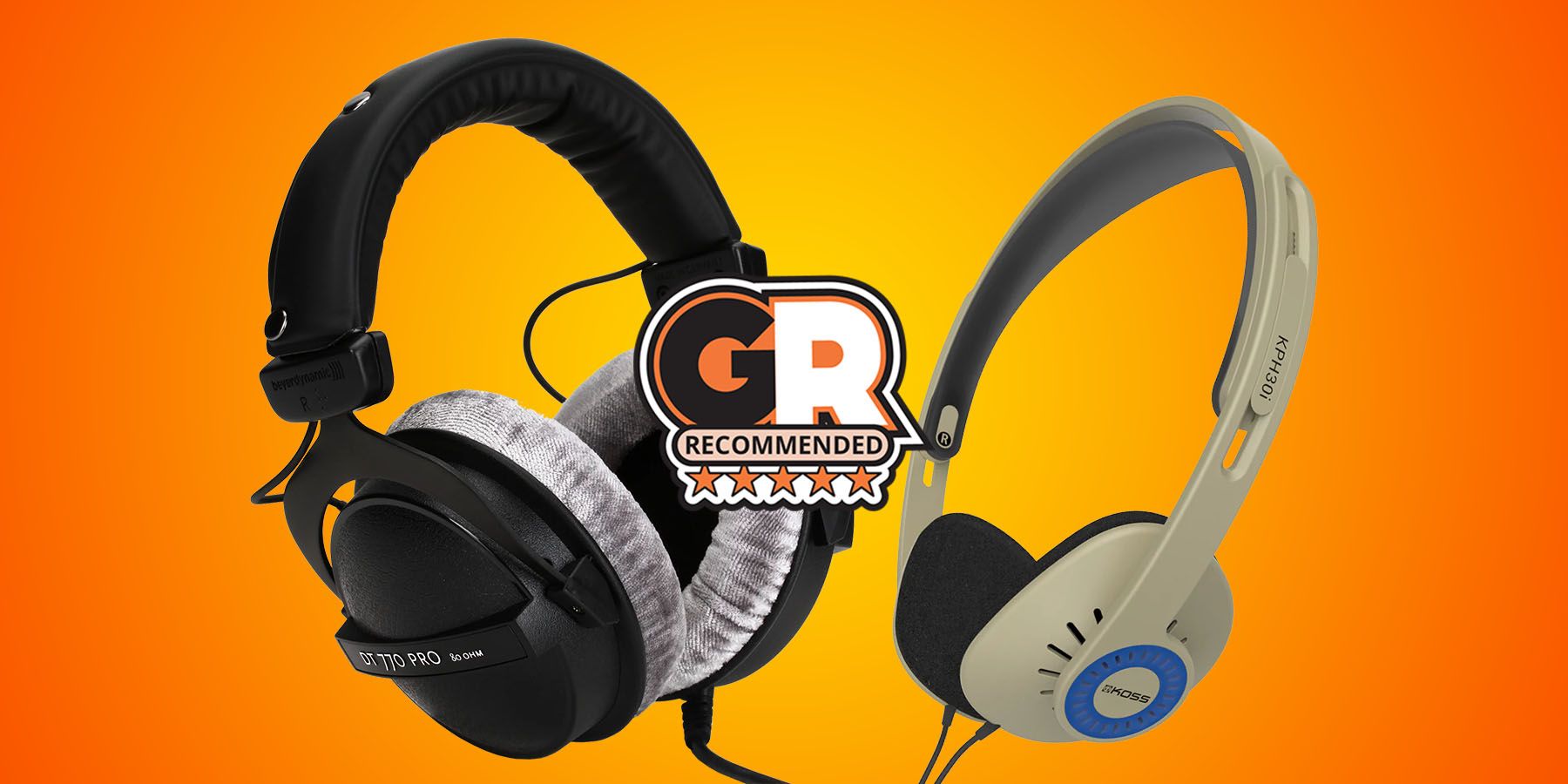
Related
Best Wired Headphones
With the number of fantastic wired headphones released recently and old standbys going strong, now is a great time to pick up some wired headphones.
These studio monitors offer RCA inputs, a TRS 1/8-inch stereo input, a 4-pin speaker connector, as well as Bluetooth. They are DPS controlled, which enables various EQ settings for tweaking and optimizing the different frequencies. The compact form factor of these monitors enables you to mount them on any standard mic stand in the smallest of spaces. Furthermore, it is also easy to travel with, and you can toss them into your backpack or get the iLoud Micro Monitor Travel Bag separately.
Another advantage of the compact form factor is that they can be positioned much closer to you, which will help further eliminate the effects of room reflections and standing waves on sound output. The design of the iLoud Micro Monitor is also quite unique, and it incorporates the bass reflex port on the front seamlessly.
What to Look Out for When Buying Studio Monitors
Active vs Passive Monitors: Studio monitors can be active or passive. While the market is mostly filled with active options, there are some passive ones as well that may work better for some users. Active monitors are ones that have an amplifier and crossover built in, while passive monitors require you to use your own amplifier and crossover.
Power: The power of a studio monitor is measured in Watts. The more powerful a speaker is, the better its sound output will be, and not just in terms of volume. The power also determines how wide the dynamic range can be and how far you can push the speakers before the signal peaks.
Driver Type: Like with any speaker or headphone system, a driver is what drives the air and creates pressure and vibrations that allow us to perceive sound. These drivers are made out of a variety of materials and these different materials have their own properties and effects on the sound output.
Cabinet Type: There are two major types of cabinet designs for studio monitors: ported and closed. Ported cabinets are typically not as accurate as closed cabinet studio monitors. The ports allow for extending the frequency response, which results in more bass. Studio monitors with ports on the back and placed close to a wall will feel this even more.
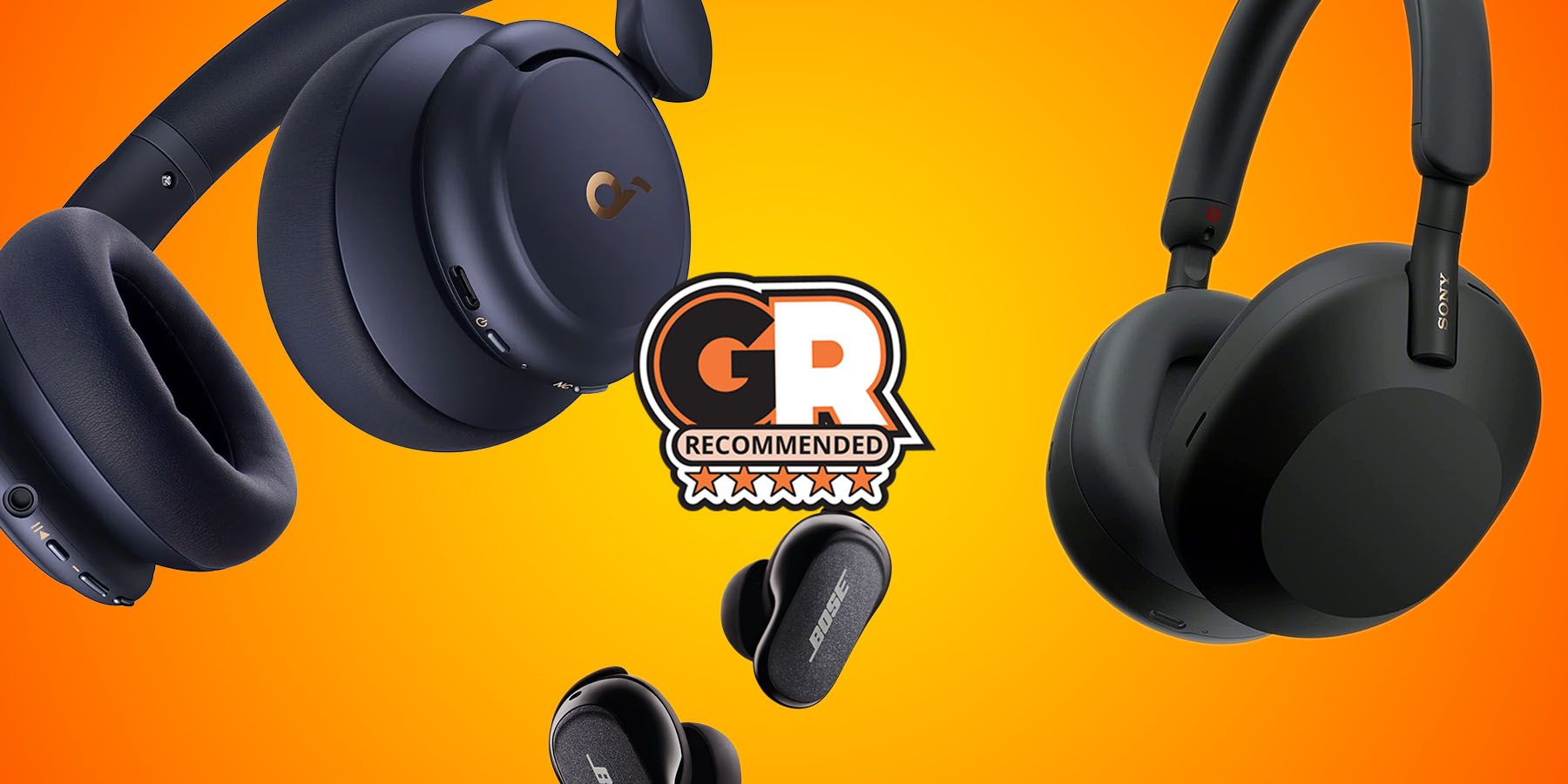
More
The Best Noise Canceling Headphones In 2024
Noise Canceling is an important feature for high-end headphones of late. Here are some of Game Rant’s best picks available to buy right now.
FAQ
Q: How to choose the right studio monitor?
Finding the right studio monitor can be tricky. Some of the factors you can consider before making the purchase is whether they are active or passive, what is the maximum power output, what type of cabinet, the type of driver, and, of course, the budget.
Q: What is the 38 rule for studio monitors?
The 38% rule has to do with the positioning of the studio monitors. This means you should be seated 38% from the wall in front of you inside a rectangular room as this minimizes standing waves.
Q: Are studio monitors better than speakers?
Studio monitors and speakers serve different purposes. For accurate and more natural reproduction of sound, studio monitors are better but for filling a big space with loud music, speakers are better.


